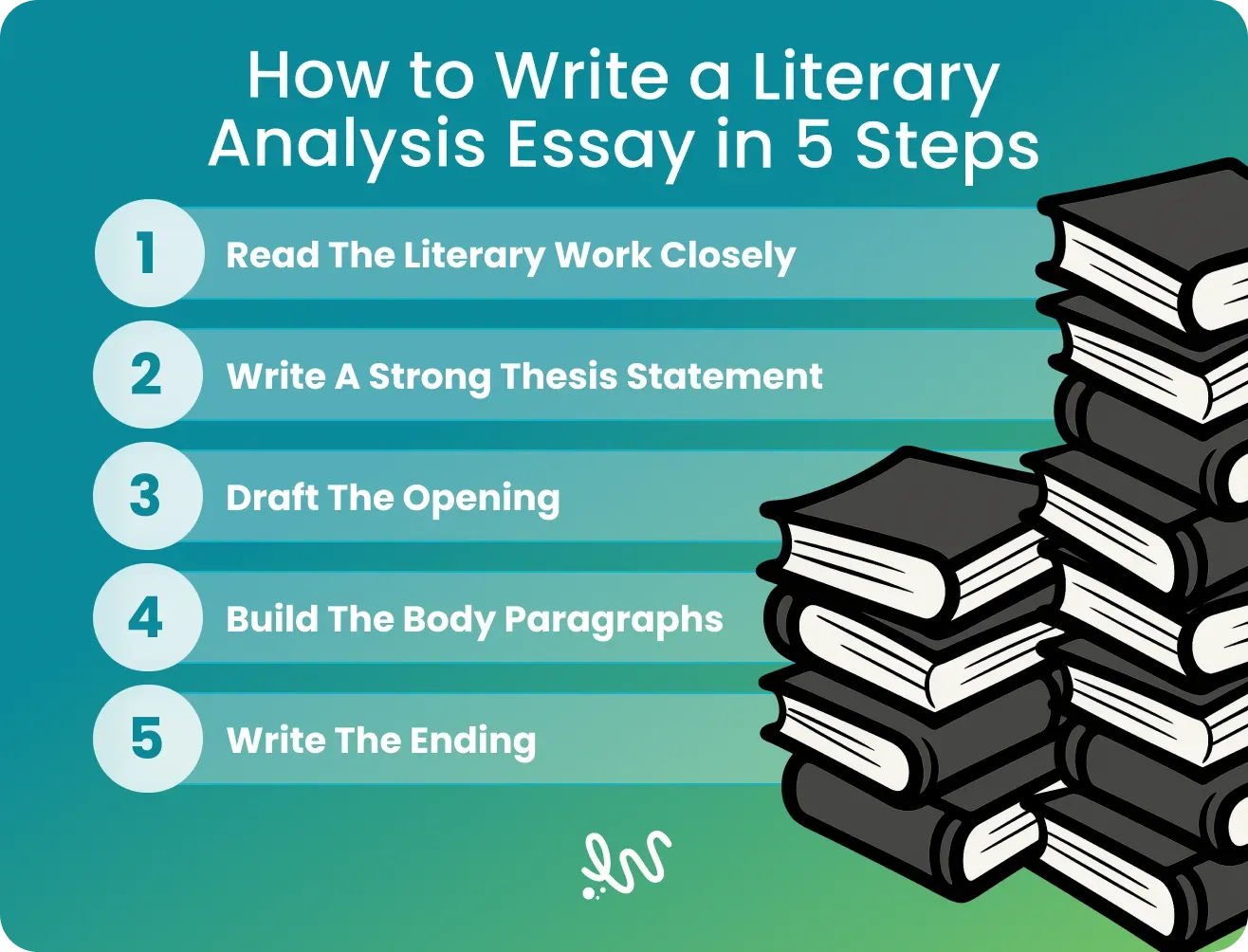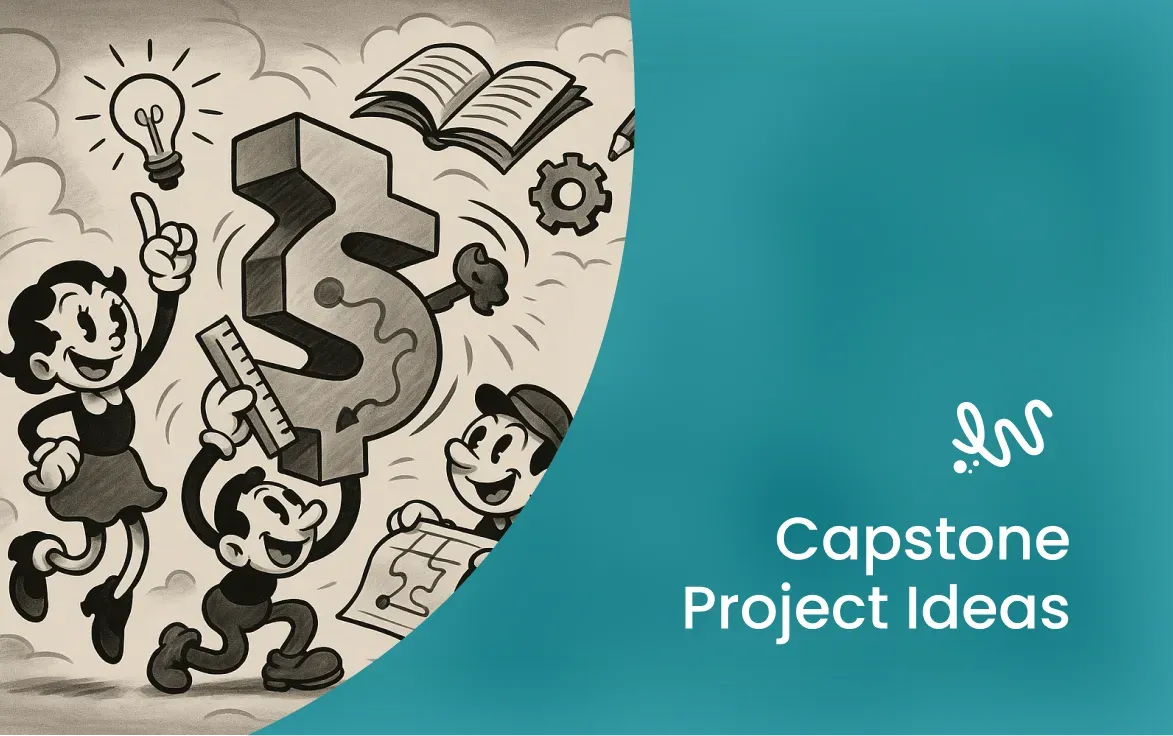A literary analysis is a critical examination of a literary work. It focuses on technique rather than plot. Even though you will need to include some summary within the analysis, the focus here is to look at the author’s choices and how they contribute to the overall meaning. Literary analysis answers a simple question: why does writing work the way it does. You try to understand how different techniques help you interpret ideas hidden between the words.
An example of a literary analysis essay can help you before you start building one of your own. Our article puts together several of them in PDF form so you can download them. If you still need an extra hand, WriteMyEssay is in your corner. You can always connect with us to make your work more structured and improve your writing skills.
You’ve Done Enough for Today
Let a writer take over and finish the paper you started while you take a deep breath.
Ask For Help
What Is a Literary Analysis Essay?
A literary analysis essay studies a writer's expression through technique. It examines the relationship between literary elements and how they work together to express purpose. The argument centers on how they support one main point, and every claim must rely on textual evidence. When written clearly, the analysis reveals layers of the text that ordinary reading might overlook. Here are the elements it consists of:
- Theme
- Character development
- Tone and mood
- Imagery and symbolism
- Structure and form
Literary Analysis Essay Outline
Plan the essay carefully before you can even think about starting the draft. A literary analysis essay structure is simple, but it's still necessary to make sure your arguments flow logically.
1. Introduction
- Begin with an interesting hook
- Mention the author and the title of the work.
- End the paragraph with a thesis statement.
2. Body Paragraph 1: First Main Idea
- Focus on one literary element.
- Support your point with evidence.
- Explain how this detail strengthens your argument.
3. Body Paragraph 2: Second Main Idea
- Examine another element.
- Use clear reasoning to show how it builds on the previous idea.
- Keep the paragraph focused on one central point.
4. Body Paragraph 3: Third Main Idea
- Analyze an additional part of the text.
- Provide quotes or examples.
- Link your insight to the thesis.
5. Conclusion
- Restate the thesis using different words.
- Summarize the strongest ideas from your analysis.
- End with a final thought that leaves readers reflecting on the text.
5 Steps on How to Write a Literary Analysis Essay
Every essay starts with a single idea that slowly takes shape as you study the text. The same applies when you begin writing a literary analysis essay. Let's see how you should handle the analysis before we go into each part in detail:
- Read the work carefully and take note of the author's choices
- Create a thesis statement that captures your main idea
- Write a title and introduction that invite the reader in
- Build the body with clear reasoning and natural transitions
- End with a conclusion paragraph that brings everything together

Step 1: Read the Literary Work Closely
Strong literary analysis always starts with slow, intentional reading. Let the story unfold and notice how each word earns its place. As you read, look for subtle patterns that stand out. Keep a pen nearby and jot down notes on what feels meaningful or recurring. Pay special attention to:
- The pacing of the sentences
- Shifts in tone or emotional intensity
- Repeated images or symbols
- Descriptive passages that shape the atmosphere
- Metaphors or comparisons
When you read, keep the short list of literary devices you drafted on your side. Maybe you read a line that echoes an earlier scene. Or a metaphor that stretches across several chapters. Those details are the very clues that will help you interpret the text later.
Step 2: Write a Strong Thesis Statement
Settle on the main point you want to make after reading the text. Ask yourself what the text reveals and what insight stands out after your observations. Out of this single moment of realization, your thesis statement will grow. This single clear line should catch both what you’re arguing and why it matters.
Through this single sentence, everything you've noticed in the text finds its purpose. Avoid wandering in your writing by letting the thesis act as your compass. Each argument you build should return naturally to that central idea.
Example:
In The Great Gatsby, Fitzgerald uses color and perspective to show how ambition distorts the promise of success.
A thesis should express the main idea in a few words. Once you're sure you can explain your point in a single sentence, you can safely say you're ready to write.
Step 3: Draft the Opening
The literary analysis essay introduction should tell the reader what the paper is about. Start with something that draws attention immediately: it will make the reader interested, too. The first few sentences should lead them into your topic without overexplaining. As you write the opening, give just enough background so the context of your argument is easily understood.
You can even find and use some interesting essay sentence starters to find inspiration for the introduction. By the end of this part, the reader should know exactly what your essay examines and sense the direction your analysis will take.
Example:
Title: Illusions in the Light: Searching for Meaning in The Great Gatsby
Introduction: The world of Gatsby gleams on the surface but trembles underneath. Every party hides exhaustion, every dream blurs at the edges. Fitzgerald's novel turns desire into reflection, and reflection into loss. This essay looks at how language and color shape that illusion.
Step 4: Build the Body Paragraphs
Now your ideas need space to develop. That happens in the body paragraphs. Each one should open with topic sentences and focus on one point that supports your thesis. Make sure every claim you make is backed up with evidence from the text: specific words, images, etc.
When moving from one idea to the next, transition words will help you build natural connections between sections. Some useful essay words will be an additional help in explaining relationships clearly: continuation, contrast, or conclusion.
Example:
Fitzgerald fills his world with color that both dazzles and deceives. Gold appears in moments of display and fades when emotion takes over. The green light glows at the story's edge, always close and never within reach. It becomes a symbol of wanting itself, a dream forever half-seen.
Pro Tip: Check for plagiarism before you submit your draft. It might seem like a simple step, but it's the only guarantee to keep your academic integrity.
Step 5: Write the Closing Part
A strong conclusion paragraph looks outward. It summarizes everything your analysis has proven and the larger meaning behind it, too. Avoid repetition: speak to what the essay revealed instead of rephrasing earlier points. This is the moment to connect evidence to insight and show how small observations build the bigger picture. End with a precise sentence that will stay in the reader’s mind. A well-written conclusion leaves them rethinking the work.
Example:
When the story closes, the brightness that once surrounded Gatsby dims. What remains is the ache behind the glitter — the quiet cost of believing too much. Fitzgerald's words leave the reader with that silence, a reminder that dreams rarely survive the world that creates them.
Literary Analysis Essay Examples
Now that you know the exact steps it takes to write a literary analysis essay, let's take a look at real samples so you can also see how these steps really play out.
Bringing Everything Together
Ideas eventually start to settle into place once the argument has matured. Each insight of your literary analysis finds its place in the larger pattern and turns observation into genuine understanding. Ultimately, the goal is to show how different elements show us things beyond what the story tells on its surface.
Students who try to build essays like this often reach a point where guidance matters. That's where WriteMyEssay comes in. Our professionals can write essays for students that you'll be able to confidently submit.
Don’t Let Deadlines Win
Send the essay over to a writer before the clock runs out again.
Finish My Paper
FAQ
What Is the Purpose of a Literary Analysis Essay?
A literary analysis essay exists to explain how literary elements work together. It studies how the writer's choices shape the story's message.
How to Start off a Literary Analysis Essay?
The first lines should open the door for readers. Read the text carefully and pay attention to what stands out. After that, introduce the author and title, then write one sentence that describes your central idea.
How to Structure a Literary Analysis Essay?
Here's a simple literary analysis work's structure:
- - Introduction: presents the text and central argument.
- - Body Paragraphs: develop specific points with evidence and analysis.
- - Conclusion: brings everything together and reflects on the essay's meaning.
How Do You Write a Literary Analysis Essay?
Begin by noticing what most people overlook. Each scene can lead to some insight. Once you find a focus, turn those discoveries into claims and connect them with evidence. Writing grows stronger with revision, and revision always begins with reading your own words as though they belonged to someone else.
How to Format a Literary Analysis Essay?
You can follow these simple steps to make sure your literary analysis essay is correctly formatted:
- - Follow the assigned style guide
- - Use standard fonts and spacing (Times New Roman, 12-point, double-spaced).
- - Include proper margins (one inch on every side).
- - Add page numbers and a header
- - Cite all sources accurately
- - Check alignment and consistency
Sources
- Subject and Course Guides: Literary Criticism: thesis examples. (2019). https://libguides.uta.edu/literarycriticism/thesis
- Literary Analysis Sample Paper August 2016 1 Provided by the Academic Center for Excellence Literary Analysis Sample Paper Formatting a Literary Analysis. (n.d.). https://germanna.edu/sites/default/files/2022-03/Literary%20Analysis%20Sample%20Paper.pdf
- Felician University Library: ENG 102: Literary Analysis. (2025). https://felician.libguides.com/ENG102/analysis



